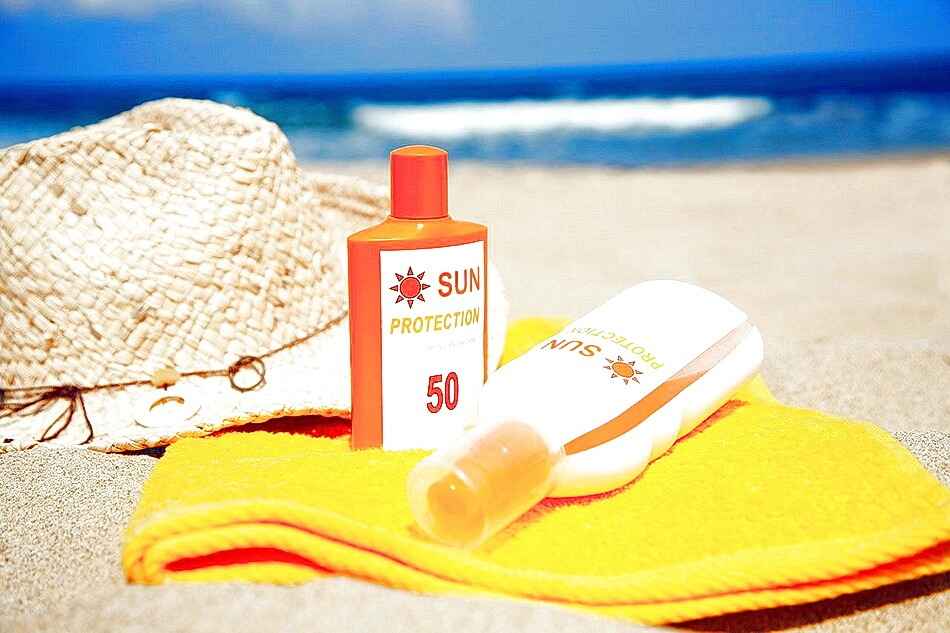We are also from the generation that did not protect ourselves from the sun during adolescence. Partly because there was no information on the damage of sun exposure. There is good news in that more and more people are becoming aware of the importance of sun protection. We offer best product and services for Skin Specialist In Abu Dhabi.
This is very important to be able to show off much healthier skin and avoid complications from chronic sun exposure in the future.
What Does the SPF Mean in A Sunscreen?
SPF stands for Sun Protection Factor. The number indicates how long it would take for the sun's UVB rays to redden your skin if you applied sunscreen exactly as directed, compared to how long it would take without sunscreen.
Thus, if you use a product with SPF 30 correctly, it would take you 30 times longer to burn than if you did not use any sun cream.
Today natural sunscreens with nanoparticles are very fashionable. Perhaps you are not quite sure about using them because you have heard some alarming and conflicting information that makes you doubt their safety and effectiveness. But what are nanoparticles and they are really safe?
Sunscreen With Nanoparticles
Nanoparticle sunscreens are actually nothing new and have been in use since.
What Are Nanoparticles?
Nanoparticles are incredibly small particles of a certain substance. They are less than 100 nanometers thick, which would be 1,000 times smaller than the thickness of a hair.
In the case of sunscreens, the nanoparticles in question are zinc oxide and titanium dioxide. These ingredients break down into ultra-fine particles before adding to the sunscreen. That is why when we talk about mineral sunscreens, there may be those that have nanoparticles and those that do not, depending on the size of their particles.
What Are the Advantages of Nanoparticle Sunscreens?
When choosing your natural mineral sunscreen, you have two options: those with nanoparticles and those without. The difference between the two will be noticeable on your skin.
In their normal form, without nanoparticles, zinc oxide and titanium dioxide are quite white. Think of the stereotypical lifeguard with the white on the back of his nose: yes, that's zinc oxide.
Now, the nanoparticles. Sunscreens made with micronized zinc oxide and titanium dioxide absorb much better into the skin and don't leave a cakey look.
Sunscreen And Vitamin D And Benefits Of Sunbathing
Women eating oily fish, vitamin D, cheese, and sunbathing
For years there has been controversy about safe levels of sun exposure. Some suggest that we shouldn't limit sun exposure too much, because the sun helps build vitamin D stores by converting the inactive forms of the vitamin in the skin to the active form.
However, this reaction that occurs on our skin takes much less time than tanning and can achieve in a few minutes even when wearing sunscreen.
We really need to get to produce vitamin D in case you have any questions about that. There is little point in justifying sunbathing and tanning by invoking the health benefits of vitamin D.
Are Sun Creams with Nanoparticles Safe?

Being so small, they can absorb through the skin and into the body. The safety of these micronized particles has questioned by some. How much to absorb and how deep they penetrate depends on how small the zinc oxide or titanium dioxide particles are and how administer them.
From what we know, zinc oxide or titanium dioxide nanoparticles do not appear to be harmful in any way. In vivo human skin penetration studies demonstrated that the nanoparticles did not penetrate the stratum corneum, which is the most superficial layer of the epidermis. reference
If you're still concerned about nanoparticles, you might want to avoid micronized titanium dioxide products altogether, as this ingredient has link to potential health problems. Keep in mind, however, that most of these cause problems by inhalation or ingestion of titanium dioxide nanoparticles from studies in laboratory rats, and not by skin absorption. reference
Do Sunscreen Creams Expire?
Most skin care products contain a small symbol that tells us how long after opening the product to throw it away. We include it in all sun creams and looks like this:
symbols showing the period after opening a sunscreen
This symbol indicates the PAO, which means "Period after opening". If it says 6M it means that you must throw away the product after 6 months of opening it.
Does Sunscreen Harm The Environment?
Estimate it releases hat up to 14,000 tons of UV filters annually on coral reefs. In some specific study we observed that organic filters cause bleaching. Including Oxybenzone in which identify ingredients manufactured or imported.
However, a study conducted, showed that concentrations detected in seawater were 1,000 times lower than those reported to be cytotoxic to coral reefs in vitro.
Multiple studies have concluded that warming ocean water and ocean pollution are the main factors contributing to coral bleaching. In many parts of the world, due to the availability of other filters, no longer commonly use oxybenzone in sunscreens.
Final Photo-Protection Guidelines
We have already seen which are the best sunscreens for your skin care depending on the activities you do. Now I leave you with some final photoprotection tips.
Stay out of the sun during the hours of greatest intensity (from 10 in the morning to 3 in the afternoon).
Use other methods to protect yourself from the sun such as avoiding the sun. Trying to find shade, using photoprotective clothing, wearing wide-brimmed hats and sunglasses
Use Sun Protection Regularly:
Choose a sunscreen that offers an SPF of at least 30 and that protects from both UVA and UVB radiation. (Also called “broad spectrum.”)
Check The Local UV Index:
which predicts the level of UV radiation and indicates the risk of overexposure on a scale of 0 (low) to 11 or more (extremely high). Normally you can see it in the weather application of your smartphone
Wear Protective Clothing:
Shirts with long sleeves, hats with wide brims, and long pants provide good sun protection. The best are dark and tight fabrics.
Reapply at least twice a day:
Even more so if you have sweated, swam, or rubbed yourself with a towel.
Conclusion
These measures are most effective in combination. And are especially important for children or anyone with fair skin. It doesn't matter if it's cloudy or not, you can still burn. So, that you join all the people who are already protecting ourselves from the sun to have healthier skin and prevent photoaging and photo carcinogenesis in the future.
To Get the Best Deal Visit Our Official Website at : Dermatologist in Abu Dhabi


No comments yet